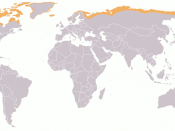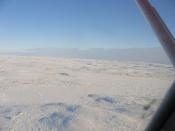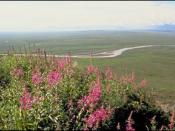Location
The Tundra is located in the northern regions of North America, Europe, Asia, as well as a few regions of Antarctica. The Tundra is the second largest vegetation zone in Canada. It can be divided clearly into three different sections: the High Arctic Tundra, the Low Arctic Tundra and the Alpine Tundra. The latter Alpine Tundra occurs in higher altitudes such as mountains whereas the first two are mainly based in plains and lowlands of some kind. The Low Arctic Tundra is the transmission point to the north. It is located above Canada's Boreal forests and is followed by the High Arctic Tundra. The High Arctic Tundra is located farther north and encompasses the Arctic circle as well as most of the western Northwest Territories. Generally though since climate more or less corresponds to vegetation zones, the Tundra is located in Arctic climate areas.
Temperature
The Tundra suffers a very harsh climate.
Because of this fact most of the area remains barren save for a few shrubs and lichens. It's winters last from 8-10 months and the summers are cool and short. Also due to the fact that much of it's territory is located within the northern pole a lot of the Tundra receives alternating 6 month periods of light and dark. This is also the reason why the Tundra receives cold weather; at it's degree of latitude the suns rays end up hitting the region obliquely, thus causing less solar heat. Here are the temperatures of the Tundra in general:
Average January temperature: -32.1 degrees Celsius
Average July temperature: +4.1 degrees Celsius
Temperature range: 36.2 degrees Celsius
Average annual temperature: -17 degrees Celsius
Lowest temperature recorded: -52.5 degrees Celsius
Highest temperature recorded: +18.3 degrees Celsius
After seeing these temperatures you can see the reason why...


